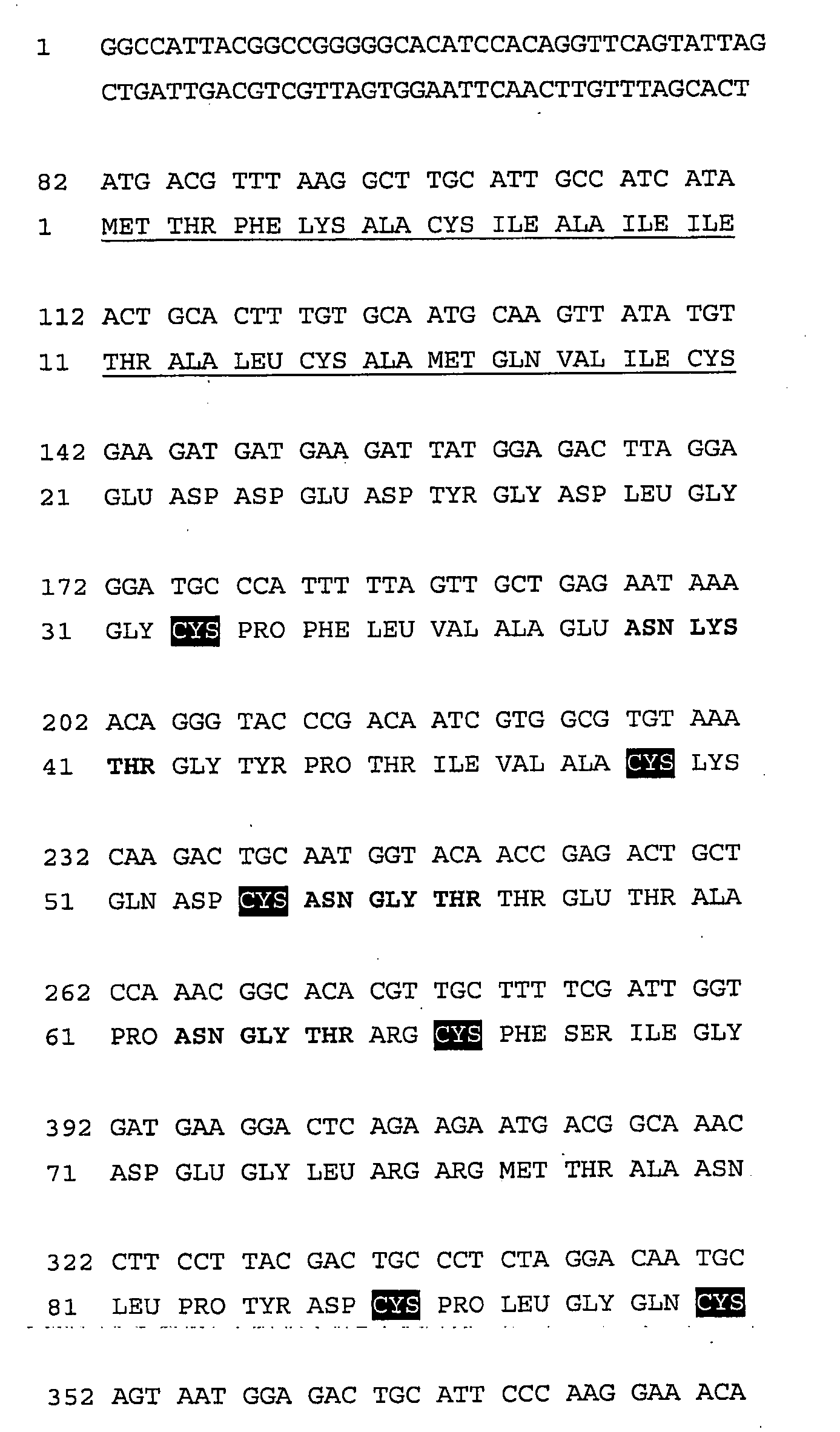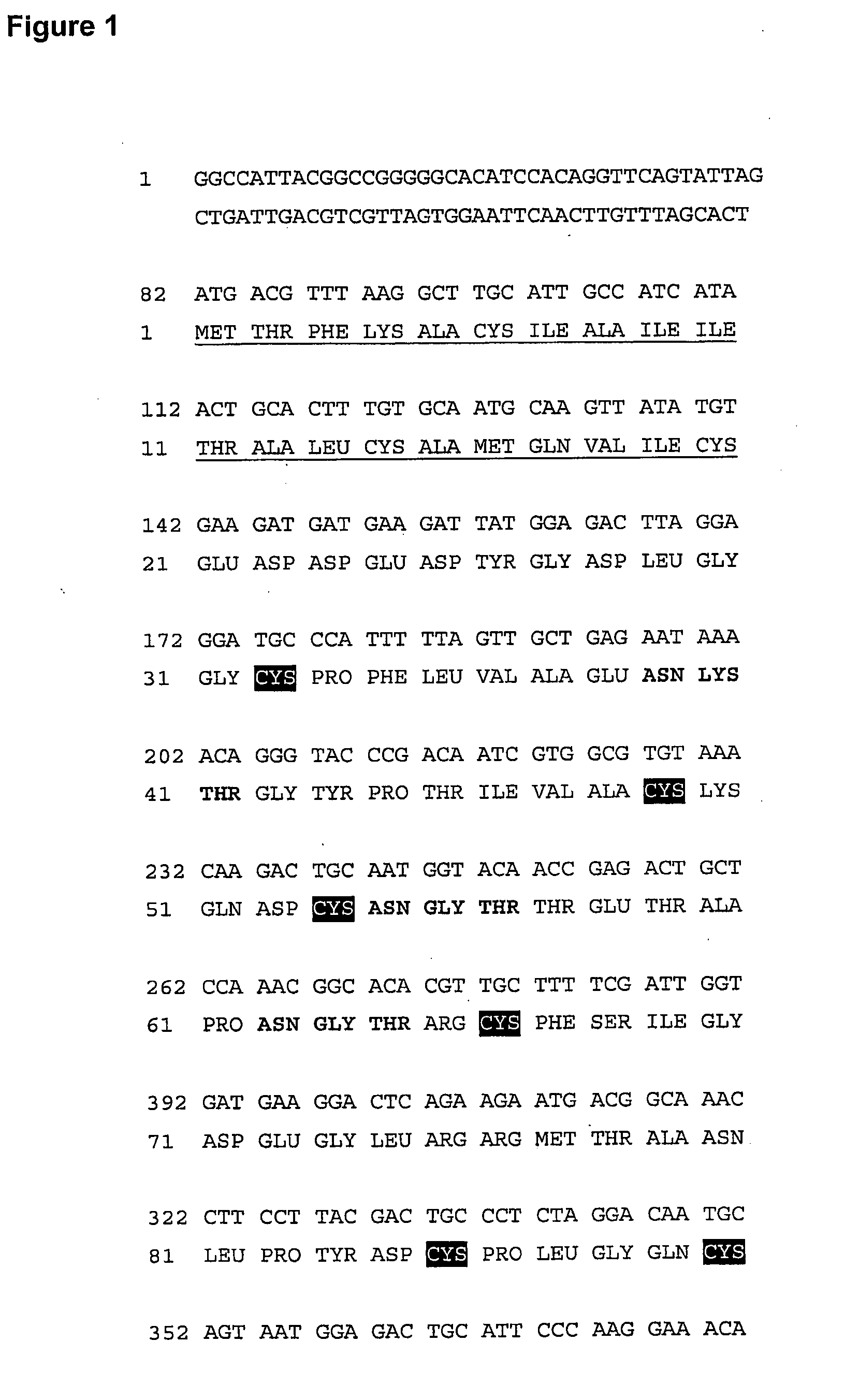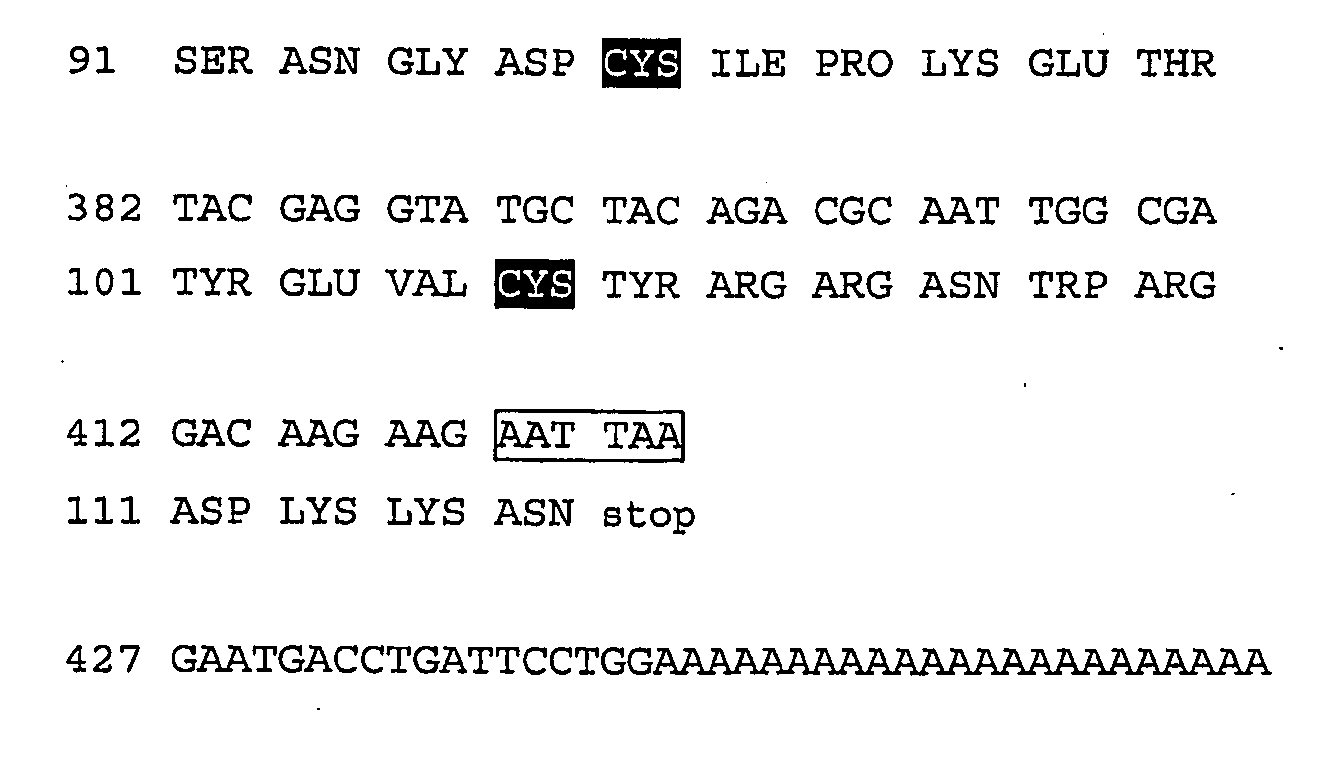Novel cc-chemokine antagonists
- Summary
- Abstract
- Description
- Claims
- Application Information
AI Technical Summary
Benefits of technology
Problems solved by technology
Method used
Image
Examples
example 1
Screening of the Rhipicephalus sanguineus Saliva and cDNA Library for CC-Chemokine Binding Activities and Cloning of ChBP-59
Materials and Methods
[0191]a. Screening of Chemokine-Binding Activities in the Saliva of Rhipicephalus sanguineus (Common Brown Dog Tick)
[0192]Crude Rhipicephalus sanguineus tick saliva was obtained according to the protocol as published (Ferreira B R and Silva J S, 1998). Aliquots of Rhipicephalus sanguineus saliva (RSs) were tested using different assays including, as negative control, Bovine Serum Albumin (BSA) and, as positive control, a CC-chemokine-binding protein from ectromelia virus (known as vCCI or p35).
[0193]Different amounts of RSs and of vCCI were spotted onto nitrocellulose filters in parallel, and the filters exposed to different radiolabeled, recombinant CC- and CXC-chemokines.
[0194]A Scintillation Proximity Assay (SPA) was designed for detecting molecules interfering with the chemokine / chemokine receptor interaction as described in the literat...
example 2
Purification and Validation of ChBP-59 Expressed in HEK293 EBNA Cell Culture Supernatant and in TN5 Insect Cell Culture Supernatant as a His-Tagged Recombinant Protein
Materials and Methods
[0210]a. Subcloning of ChBP-59 cDNA into the Expression Vectors pDEST8 and pEAK12d Using the Gateway™ Cloning Process
[0211]The first stage of the Gateway cloning process involves a two step PCR reaction (PCR1 and PCR2) which generates the ORF of ChBP-59 flanked at the 5′ end by an attB1 recombination site and Kozak sequence, and flanked at the 3′ end by a sequence encoding an in frame 6 Histidine (6His) tag, a stop codon and the attB2 recombination site (Gateway compatible cDNA; FIG. 2). The PCR 1 reaction (in a final volume of 50 μl) contains: 1 μl (40 ng) of plasmid pEXP-Lib-ChBP-59, 1.5 μl dNTPs (10 mM), 10 μl of 10×Pfx polymerase buffer, 1 μl MgSO4 (50 mM), 0.5 μl each of gene specific primer (100 μM) (59-attB1 forward and 59-attB2 reverse; SEQ ID NO: 7 and 8), and 0.5 μl Platinum Pfx DNA polym...
example 3
Characterization of Recombinant ChBP-59 Inhibitory Activity on CC-Chemokines
Materials and Methods
SPA Assays
[0232]The SPA assay was designed for detecting molecules interfering with the chemokine / chemokine receptor interaction as described in the literature (Alouani S, 2000) and above (Example 1).
b. CC-Chemokine Induced Chemotaxis
[0233]Chemotaxis experiments were performed on L1.2 cells (mouse pre B-cell line) stably expressing human chemokine receptor 5 (CCR5). L1.2 / CCR5 cells were maintained in RPMI 1640 culture medium (Invitrogen, catalogue no: 31870-025) supplemented with 10% FCS (Fetal calf Serum; TerraCell, catalogue no: CS-C08-1000-A), 2 mM L-glutamine (Invitrogen catalogue no: 25030-024), 1 mM sodium pyruvate (Sigma, catalogue no: S8636), and 1% penicillin-streptomycin (Invitrogen catalogue no: 15140-148).
[0234]Twenty four hours before performing the chemotaxis assay, cells were treated with 5 mM butyric acid (Sigma catalogue no: B-5887). The next day, cells were harvested by...
PUM
| Property | Measurement | Unit |
|---|---|---|
| Fraction | aaaaa | aaaaa |
| Composition | aaaaa | aaaaa |
| Immunogenicity | aaaaa | aaaaa |
Abstract
Description
Claims
Application Information
 Login to View More
Login to View More - R&D
- Intellectual Property
- Life Sciences
- Materials
- Tech Scout
- Unparalleled Data Quality
- Higher Quality Content
- 60% Fewer Hallucinations
Browse by: Latest US Patents, China's latest patents, Technical Efficacy Thesaurus, Application Domain, Technology Topic, Popular Technical Reports.
© 2025 PatSnap. All rights reserved.Legal|Privacy policy|Modern Slavery Act Transparency Statement|Sitemap|About US| Contact US: help@patsnap.com



